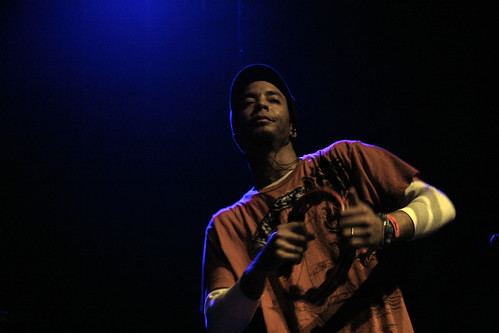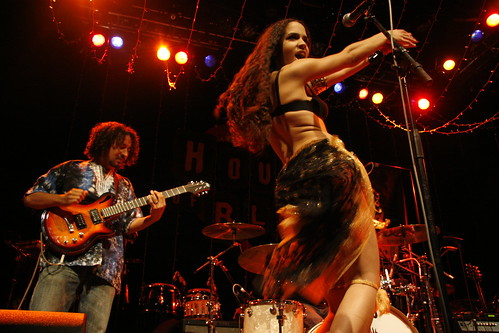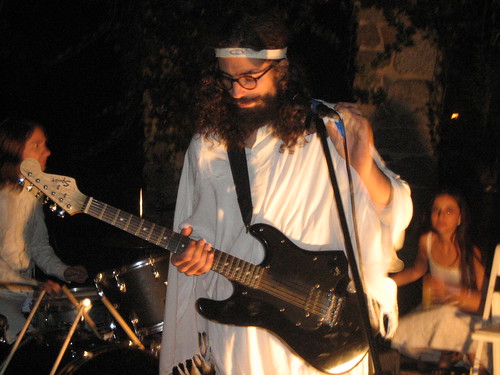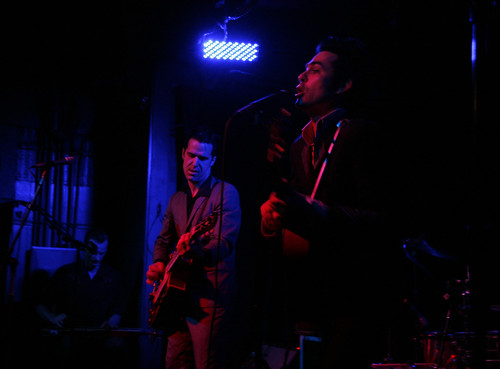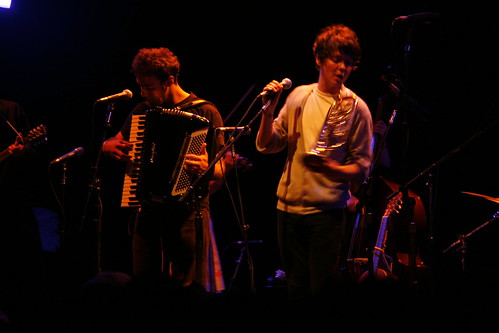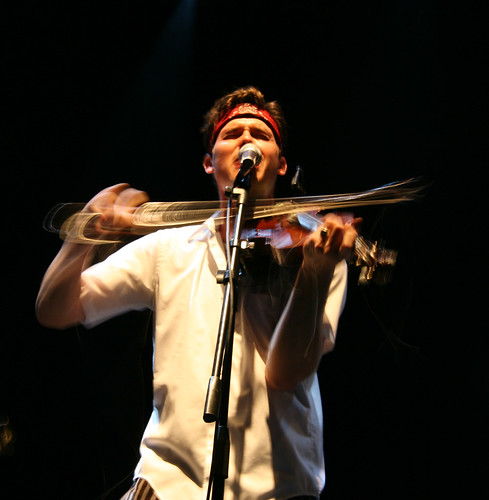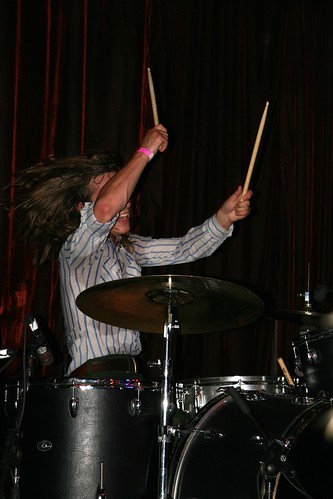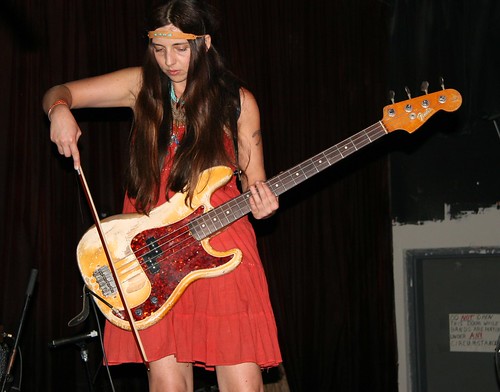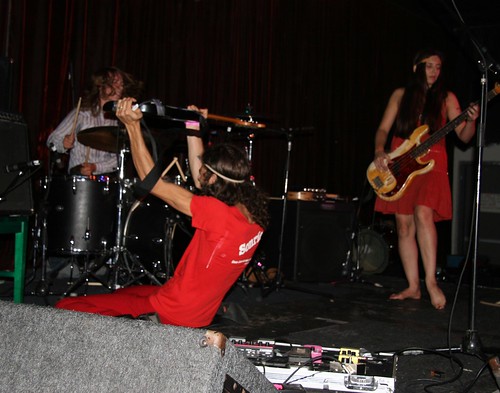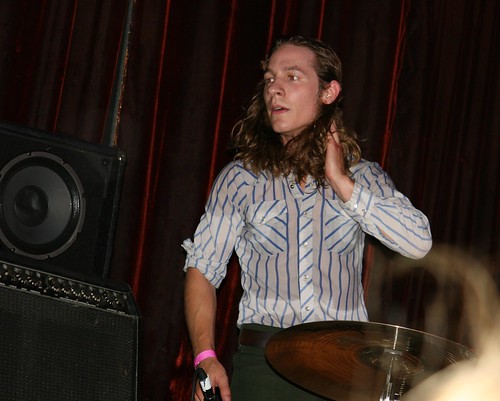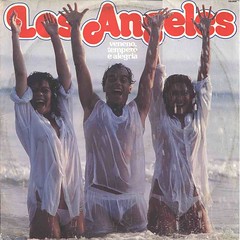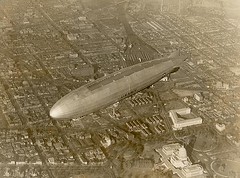A Considerable Town section, LA Weekly, December 2006
Sideshow freaks beat me up in LA Weekly
I’d been waiting for an hour outside the California Institute of Abnormal Arts in North Hollywood when the elephant man finally showed up. After an additional hour, Samantha X, the ringleader of 999 Eyes, “the last traveling freak show in the United States,” appeared on the scene with the midget and a young BBC documentarian. Samantha, a woman in her 40s with dirty, colored dreads beneath a moldy cowboy hat, ran toward us in an obvious state of distress.
“The fucking bus broke down! All my freaks are trapped on some street called Sepulveda. Can you help us pick them up?”
I’d always been into the sideshow, its history and cultural markers — Charles Eisenmann’s photographs and Todd Browning’s Freaks were regular fare when I was growing up — so when I learned that 999 Eyes was appearing, I was on the phone asking to photograph them. They had a lobster boy and a lobster girl! And a giant! And a half-girl! This was the real deal.
But things weren’t going exactly as planned. Ignoring the (prescient) advice of the BBC journalist, who whispered into my ear, “Don’t get involved,” I agreed to lead a two-car caravan down to Sepulveda and Jefferson boulevards.
As soon as Samantha got into my car, I noticed a familiar odor — the putrid stink of dirty hippies: old sweat, soiled clothes, cheap vegetarian Thai takeout and stale health-food cookies. Breathing through my mouth, I attempted to converse with Samantha about her craft and the tradition behind it. It turns out that these freaks spend three months out of the year performing at Burning Man. The fear that gripped me at this point was reminiscent of the terror felt when I first realized my chiropractor was a Scientologist.
After much traffic, anxiety and confusion, we made it to the freak bus. A flash of various body sizes, clown makeup, dogs and tambourines, and we were on our way back to North Hollywood. Next to me in my 1995 Nissan Sentra was the 7-foot-3-inch Gentle Giant, scrunched over his taxidermied two-headed calf, while Samantha X, the lobster girl and (thankfully) the half-girl sat in the back, putting on their white face paint.
I tried to break the ice with some Hollywood humor.
“So, do you guys think you can get me on the guest list for your gig?”
Instead of telling me that of course I was getting a free seat, Samantha proposed a swap: I see the show for free, photograph it and send them prints. Ten-dollar admission in exchange for photographing and developing expensive prints and lugging them to their first L.A. performance? I looked at the giant and he looked at me, and after visualizing one of his super-sized hands around my throat, I just mumbled, “Okay, sure.” Damn, damn hippies.
In North Hollywood, 15 minutes past curtain, I was sitting double-parked, waiting for the freaks to finish unpacking their gear, when I heard the midget yell out, “I hate these kinds of trunks — it won’t stay open!” This was followed by a loud, metallic snap. I jumped out and ran around to see my trunk stuck open at a 90 degree angle. It wouldn’t budge. That’s when I started yelling.
“What did you freaks do? My trunk is broken! Someone, anyone, come over here!”
The Gentle Giant inspected the trunk with Lowrent the Clown, pointed to something on the inside and said, “Oh, it’s that part.”
I looked inside to see what he was talking about, when the trunk came slamming down on my head.
“Oh shit, are you okay?” said the Gentle Giant. When I murmured something close to a stunned yes, he added, “I can’t get this to close. Oh well.” And off he went. That was the last I saw of the giant.
I was standing there feeling my head for blood and fighting off tears when four of my friends arrived. Within five minutes my trunk was closed and there was a plastic cup of Jack and Coke in my hand. I tried watching the freak show, but I couldn’t get into it — whether from annoyance or because it sucked, I couldn’t tell. But world-famous dwarf and sideshow performer extraordinaire General Tom Thumb was probably rolling over in his miniature grave.
At home, my pained head and jaw and my bloodshot eyes worried my brother. Four hours later I lay in Cedars-Sinai, diagnosed with a mild concussion. A woman in a business suit and loud blue pumps asked me whether I had been treated there before. “Yeah, I was born here,” I replied.
I was born here, and here I am. My trunk is broken, I have a concussion, and I didn’t get to take any photographs of those freaks. What was I doing with my life? I let out a huge sigh. My brother continued flipping through his copy of Sports Illustrated and said, “This is why Dad wanted you to be a lawyer.”
